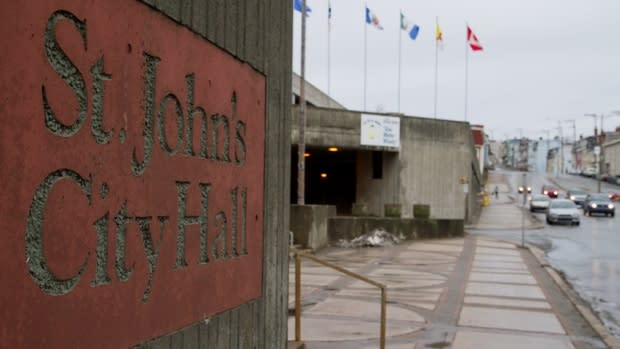Bracing for a brutal budget in St. John's
They've been warning residents about it for a while and now it has almost arrived.
The City of St. John's 2019 budget is dropping Monday, and it's expected to be a doozy.
"If you thought that 2016 was a tough budget, well, you better be prepared. 2019 is going to be tougher," said Jonathan Galgay, the former St. John's city councillor who was in charge of delivering 2016's much-maligned budget.
The city has been warning residents it's facing a $12-million deficit and that taxes and mill rates for homes and businesses will be going up in the 2019 budget.

Galgay, now the executive director of the George Street Association, told The St. John's Morning Show that residents aren't the only ones bracing for the brutal budget ahead.
"If the city is going to increase taxes, which [they] have already given us an indication that they're going to, people are going to have less disposable income," he said.
And that means they'll be slapping fewer bills onto bars and restaurant tables in the downtown core, Galgay said.
Taxes, mill rates going up
In September, the city was anticipating a bump in the residential mill rate — currently 7.3 mills — of anywhere between 0.4 and 0.6 mills. Based on that forecast, coupled with a decline in average assessed property values, the city says on its budget engagement website that most residents can expect "a tax increase of less than $10 a month."

The commercial mill rate, currently 24.7 mills, is also expect to jump anywhere from one to 1.9 mills, according to a budget primer that was mailed to residents this fall.
The $12-million deficit is partly due to the latest round of property assessments. Coun. Dave Lane told CBC News this fall that the average residential property assessment is down 4.17 per cent, contributing to a forecast decrease in residential and commercial tax revenue of about $6.4 million.
The city is also looking at a heftier electricity bill. St. John's Mayor Danny Breen told CBC news this summer that city hall is expecting its bill to up by $1.5 million in 2019.
Galgay said he's worried industry won't be able to to take the hit.
"They're still recovering from 2016."
But subsidy for Mile One and Convention Centre going up?
Residents aren't just on the hook for higher taxes.
The owner of Mile One Centre and the nearby St. John's Convention Centre is asking for taxpayer support to the tune of an extra $752,183.
St. John's Sports and Entertainment says it will need just over $3.4 million to cover its bills, up from $2.65 million this year.

Coun. Sandy Hickman, who chairs of the SJSE board, told The St. John's Morning Show that the City of St. John's is subsidizing between 20 and 25 per cent of operating costs for Mile One and the convention centre, which is "not bad compared to other facilities around Canada and around the world."
Moncton gave its Coliseum between $2.1 million and $2.62 million from 2015 to 2017, until it opened its new Avenire Centre in September, according to an official from the city. In 2018, the official said the city will kick in $3.65 million toward the operating costs of both facilities.
The City of Charlottetown anticipates subsidizing 50 per cent of the operating costs of its Eastlink Centre with a $794,000 grant.
Fredericton kicks in an annual grant of $950,000 for its convention centre, which subsidizes about 57 per cent of its operating costs.
Hickman says part of the extra funds requested by SJSE would go toward hiring more marketing and development help, in order to attract more people to the convention centre and ultimately reduce its need for taxpayer contributions.
The city is also working with a consultant to improve its bus services to increase ridership, said Ian Froude, Ward 4 councillor. Froude, who works with the city's transportation committee, said the city subsidizes about 64 per cent of Metrobus's costs, to the tune of $14 million, and that amount isn't slated for change in Monday's budget.
Ridership went up slightly this year, said Froude, and the more paid ridership goes up, the less the city is subsidizing the service.
There are ways to help businesses, says Galgay
On the business side, the city says the average commercial assessment is up 1.72 per cent, meaning that unless the commercial mill rate drops, the average business owner will also see taxes go up.
Galgay said there are specific things the city and the province could do to ease the pressure on the businesses in the George Street Association. For example, he said, he'd like to see the province increase the minimum price for a drink in bars and restaurants.
He also says it'd be a help to those establishments if beer wasn't so readily available at corner stores during prime downtown hours.
"If you reduce those hours then maybe you'll see people going out into bars and restaurants, because that's where they'll be able to purchase product."
As for helping the people and businesses outside of the George Street clutch, Galgay said the city needs to look at outside-the-box solutions for its present financial woes — things like getting the provincial government to stop making Metrobus pay taxes on the fuel it uses.
"And if you have excess buildings, if you have vacant lands, it's time now to start selling them off and start building that revenue … because it's going to be tough."
Read more from CBC Newfoundland and Labrador

